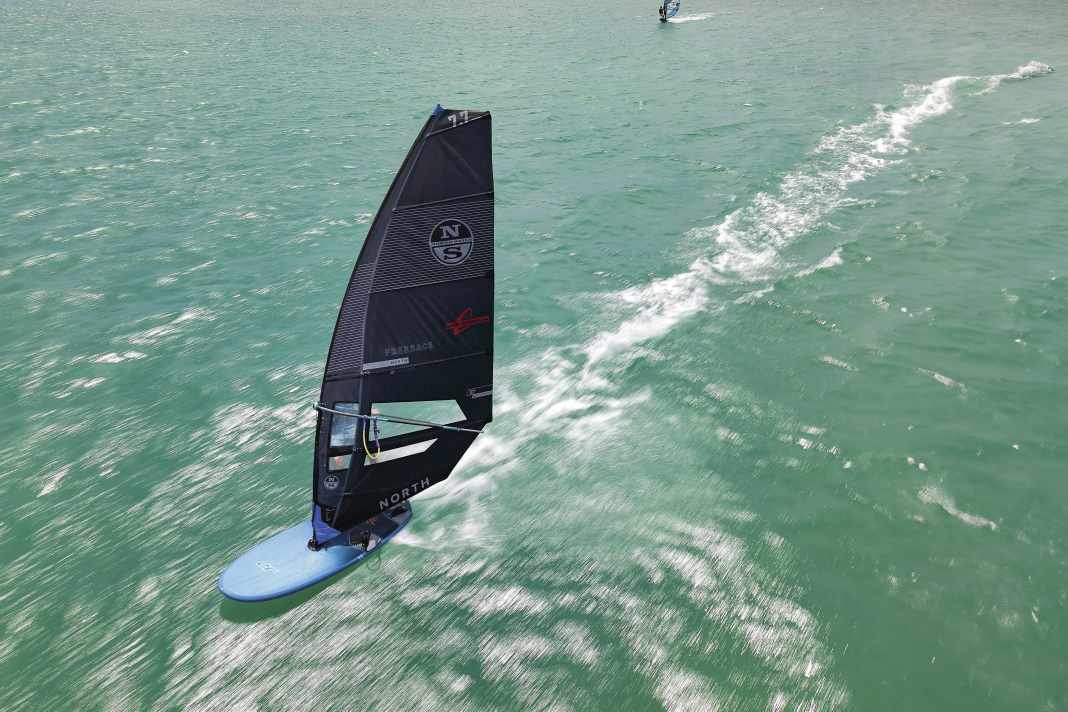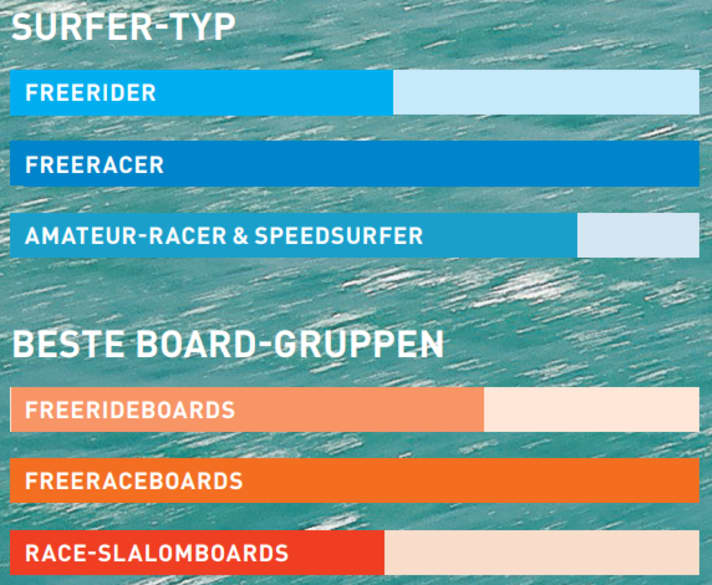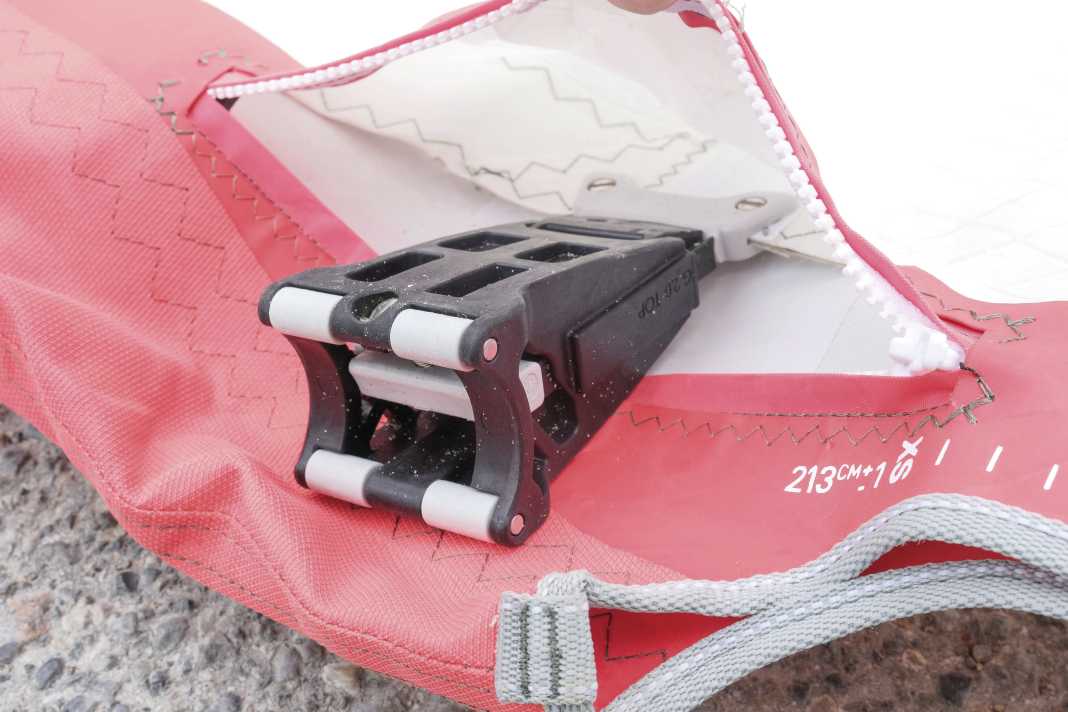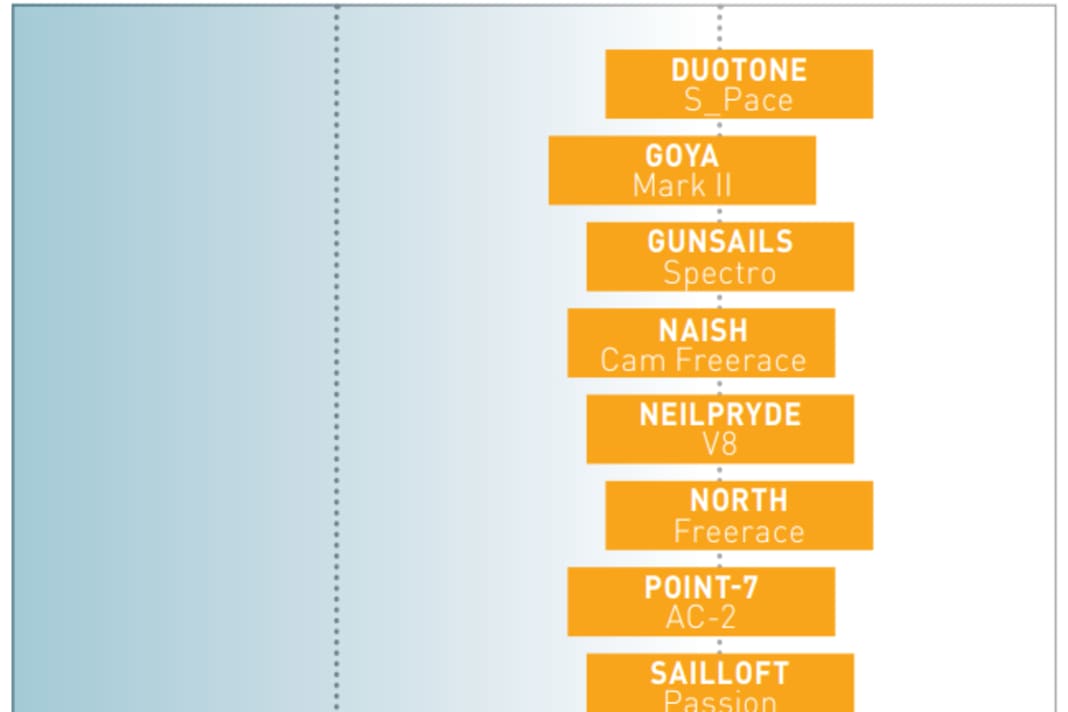





These freerace sails are included in the test:
The sails in this group may seem like dinosaurs to some, but for others they simply offer the greatest possible windsurfing pleasure. Of course, on some days we could have relaxed on the foil with a 5.3 sail, but that is basically a different sport. You miss that pithy, crisp feeling when you power over choppy waves with a 7.8 sail, when you tense your body from your toes to your shoulders. It's exhausting, but that's exactly what makes it so appealing - using your strength and body tension to really get the most out of the sail instead of just balancing on a foil board. Just give it a good pull, the board wants to take off and you fight against it. You're fighting against the forces of nature and you have this direct contact with the water - something you'll never experience in the same way with a foil, whether with a wing or sail.
That's why this sail group still has its justification, even if many are switching to foil or even directly to wing. But the feeling of blasting across the water at 18 to 25 knots with a 7.8 m sail and a 40 cm fin remains unrivalled. Some of these sails are also ideal for race-style foiling, especially the models with a slightly more compact boom length. You can cover an enormous wind range by foiling with the same sail from eight knots and switching to a fin from around 15 knots. This allows you to achieve a greater wind range with a single sail than with any other water sports equipment.
Sail-Guide Freerace sails

Huge wind range
Irrespective of this, this sail group also offers a huge range of use. When pumped up on a good freerace or freeride board, it starts at around 13 knots - with a body weight of 80 to 85 kilos - and only stops at well over 20 knots. Until then, the sails remain controllable throughout. In a range where you could easily use a 6.2 sail, we were still travelling with absolute confidence. The possible wind range is therefore not limited by the lack of control of these sails. Only if you are an absolute speed junkie and go for the last km/h in the upper wind range will the differences between the models become noticeable. However, if you change early from the normal to well-powered range, you can easily switch to a 5.5 manoeuvre sail or freeride sail - long before the sails become backhanded or appear uncontrollable.
Wide range in the test group
In recent years, manufacturers have streamlined their range of camber sails. Instead of a two-camber and a separate three-camber, there is now often just one sail that combines the best features of both concepts - as was recently the case with GunSails and Severne. As our test shows, the number of cambers says little about the characteristics. The NeilPryde sail with only two cambers is one of the tightest and sportiest, while the Duotone with three cambers offers particularly smooth handling in the jibe. Whereas in the past every manufacturer had a freeride camber sail and a pure freerace model in its range, this distinction has largely disappeared today. Nevertheless, the differences within the group are large enough for everyone to find their favourite - as we will show later in the type recommendation. With nine sails, the group covers the spectrum from comfortable freeride camber sails to extremely sporty almost-race sails.
Before these sails reach the control limit, they have normally been re-rigged for a long time."
Trimming forces and trimming tips
On land, the wheat is separated from the chaff, or rather, the racers are separated from the freeriders right from the start. The trim forces in this group alone vary extremely. From really moderate forces in sails such as the Duotone or the Goya to very high tensions in the Point-7 or the NeilPryde V8, where you either have to trim using good technique with the harness hook or can reach for the trim crank for reasons of comfort without feeling ashamed.
These trimming forces are strongly related to the mast stiffness and bending curve and influence the stability of the sail. Sails with a high pre-tension - tightly tensioned even without pulling on the outhaul - can be surfed very well with a loosely attached outhaul. These include the NeilPryde V8, the Point-7 and the GunSails. With these models, the luff tension alone is enough to generate maximum planing power in the lower to medium wind range without clew tension - without any pressure point migration. For sails with less luff tension and a less stiff profile, such as the Duotone or Goya, the profile is tightened with at least slight tension on the outhaul, as with lifting. Sails with only a loosely attached outhaul can be less direct in the jibe and show a somewhat undefined camber rotation, which can require a little more feeling and holding power in the final phase of the jibe.
Details and features






All test models convince with a very good material standard. All sails show a medium to strong loose leech. It should be noted that the manufacturer's trim specifications should not always be followed slavishly. With the NeilPryde, for example, it is difficult to reach the maximum point at all - in our opinion, this seems to be too far forward in the sail. Even with the Duotone, the suggested, particularly large trim range does not always appear to be useful. The setup works well to very well on all sails. The NeilPryde and Point-7 camber sails sit quite tightly on the mast during setup and require a carefully adjusted luff tension before they can be locked in place. On the water, these two sails are still somewhat unwilling to rotate, even when new. All other camber sails rotate much more smoothly, especially the Duotone sail. If you look at the position of the trim markings, you will notice that the single trim point on the GunSail is located where the NeilPryde marks the centre between min and max. Trimmed to this point, the NeilPryde already has plenty of "slack".
Feeling and performance
On the water, there are not only measurable differences in performance but above all in character - whether the sail is tight and direct in the hands or soft and damped, transmitting gusts and strokes and thus offering a more comfortable feeling. We would categorise one part of the group as freerace sails with a strong freeride orientation, the other as uncompromisingly sporty freerace profiles. The more comfortable and manoeuvre-friendly models include the Duotone, Goya, Sailloft and Severne.
Here you get the pure feeling of speed and the biggest wind range in one trim."
On the sportier side are the Point-7, the NeilPryde and the Naish. The North sail is an exception: Welded from high-tech laminates, it is light as a feather in the hand and rotates as smoothly as if you were turning over an air mattress. In addition, you experience a completely new riding sensation in the lower to medium wind range - with unprecedented lightness and yet good, powerful propulsion. In the upper wind range, however, the sail reaches its limits, as the inflatable Aircamber provides a very thick cushion behind the mast, which obviously limits the top speed in comparison.
The test grades of the freerace sails






Type recommendation
- For GPS racers in the hunt for personal records, what counts is how "far up" a sail can be held in a controlled manner and how much potential it can develop. GunSails Spectro, NeilPryde V8, Point-7 AC-2, Severne Moto, Naish Freerace and the Sailloft Mission are particularly recommended for this.
- Those who look for plenty of power with a minimum of comfort, that's easy to connect and rarely rides at the top limit, Goya Mark II, Duotone S_Pace, Sailloft Mission and Severne Moto could be the right choice for you.
- For blasting on a half-wind course - whether on Lake Garda, in Porto Pollo or on Fehmarn - all sails are suitable, albeit with very different handling and feel.

